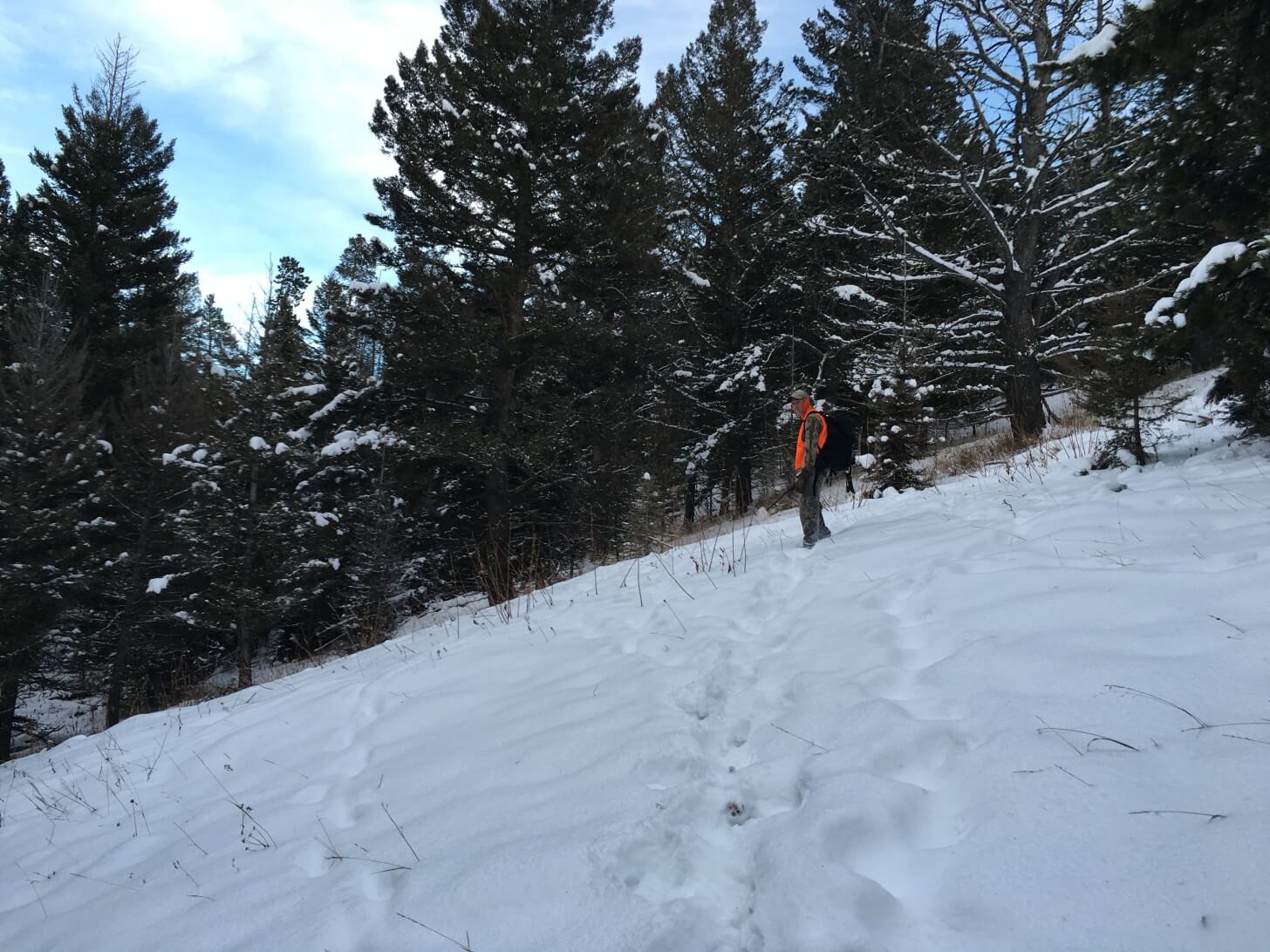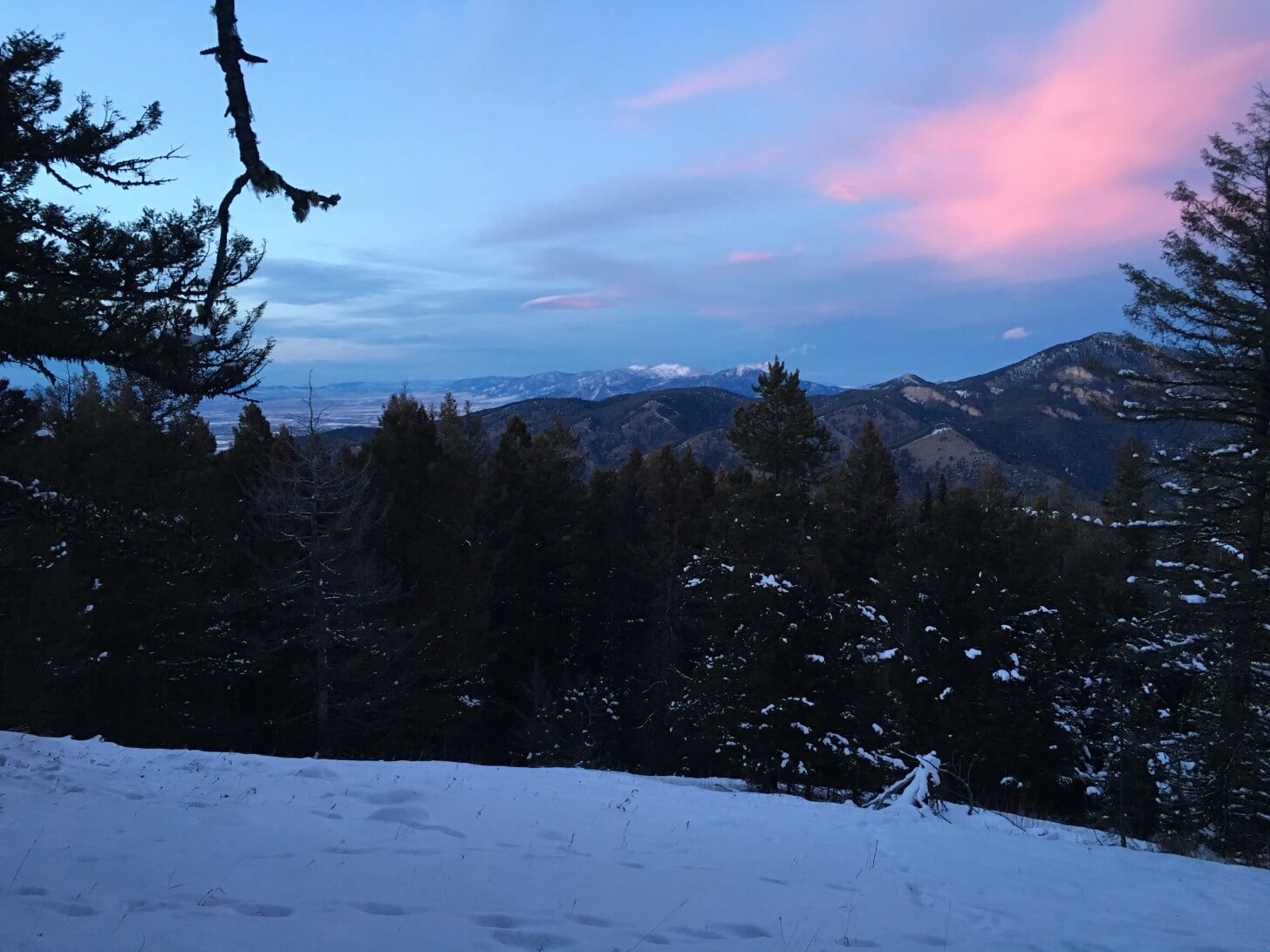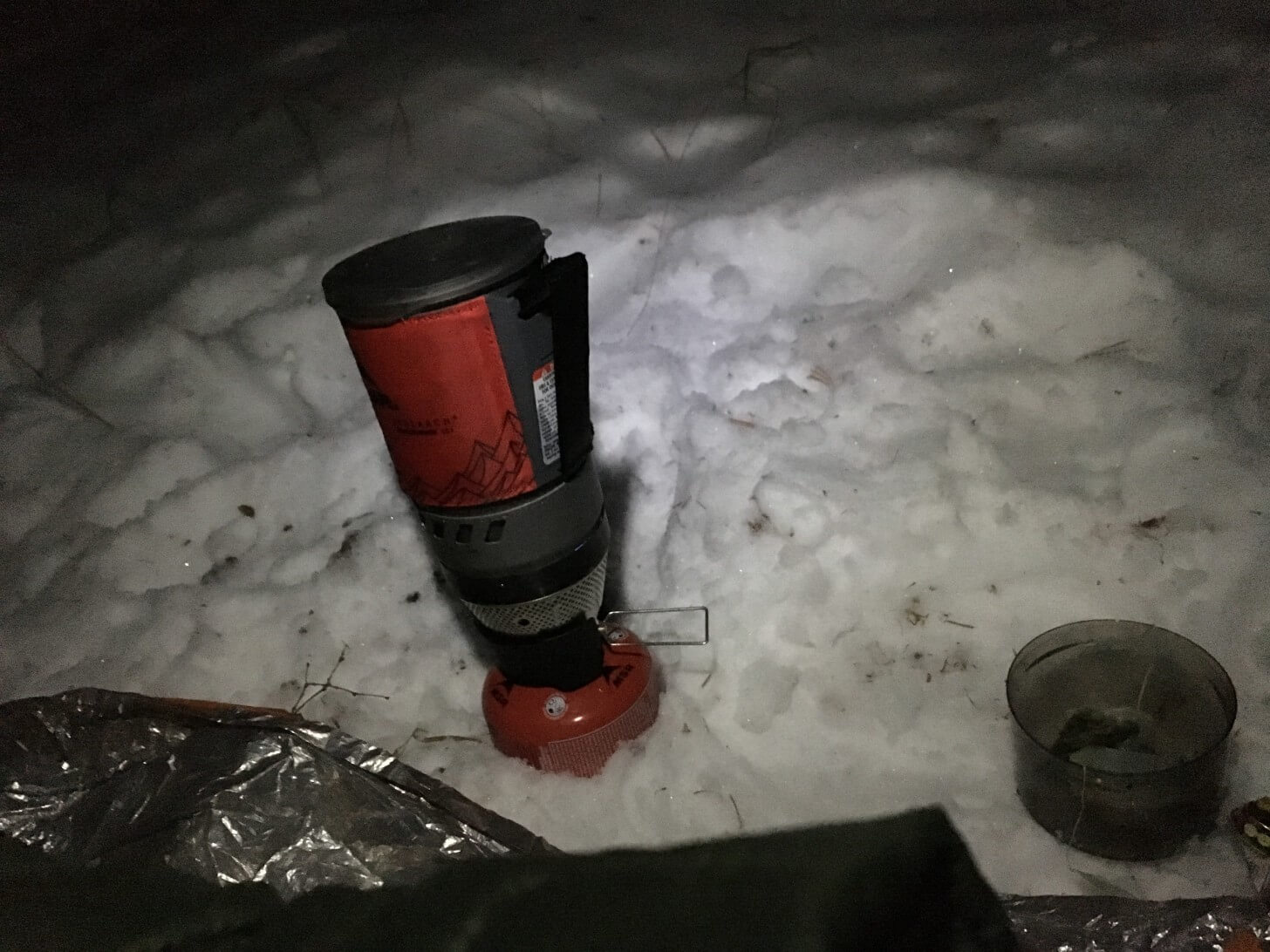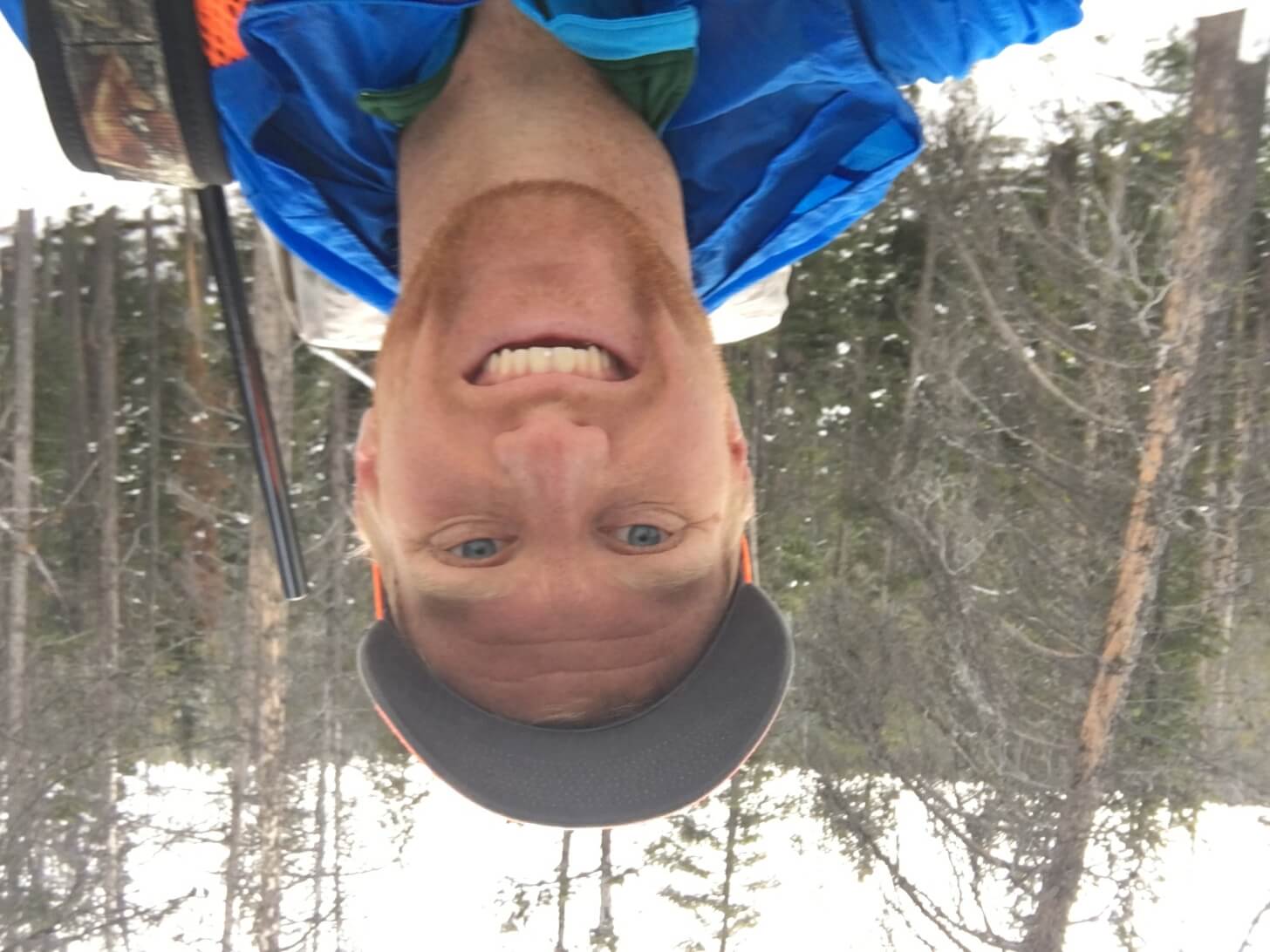Backcountry Elk Hunting, Hyalite Canyon
by Eric Vann
As much as my previous Notes from the Field: Hidden Lakes trip was defined by a warm, Indian Summer, my recent backcountry hunting trip was characterized by colder temperatures and the onset of winter.
I tried my hand at an overnight backcountry elk hunt in Southwest Montana, on Forest Service land flanking Hyalite Canyon near Bozeman.
The details:
- I left during the mid-afternoon and returned the following day by noon.
- My friend Scott joined me on the first day.
- In all, I hiked about 7 miles total; 3 on the first day and 4 on the second day.
- The lowest elevation point on the trip was about 6400 feet and the highest point was about 8000 feet.
I like that fall hunting is another excuse to get outside and fits nicely in the between summer adventures and skiing. For me, hunting is a particularly unique way to see the landscape – the quiet activity makes your senses more acutely aware of what’s going on around you.
Photo Narrative


















Equipment Notes: Backcountry Hunting & Camping Gear
Hunting Gear
Hunting was the defining characteristic of this trip so let’s start here.
Hunting in an ultralight setting can be challenging and it must be defined in different terms than traditional ultralight backpacking due to a different travel style and tempo, heavy hunting gear, and seasonal and terrain challenges. Dave Chenault wrote about the quest to come up with a reasonable definition for ultralight hunting. I’m not sure that I fall into his ultralight category, but I did make an effort to minimize what I actually needed to camp and also to bring what I only really needed for the hunt. In addition to my backpacking gear, I brought:
- Remington 700 rifle
- 20 rounds of .308 ammo
- Vanguard binoculars
- SOG hunting knife
- Pocket knife (in case hunting knife became too dull to get the job done)
- Elk and deer tags
- Black electrical tape (for attaching the tag)
- 3 trash compactor bags for holding the meat during transport
- Disposable ear plugs (like I’d have time to put them on once I see an animal…)
- Orange vest and orange ball cap
- Bear Spray
Of course, I didn’t have the chance to actually use any of this gear on this trip, so I can’t offer too much commentary on how it worked!
Clothing, Shelter, and Sleep System
| Item | Brand | Model | Notes |
|---|---|---|---|
| shelter | Moutain Laurel Designs | Event Bivy | With my pad and sleeping bag on the inside I felt cocooned but was definitely warmer than without a bivy. |
| sleeping bag | Warbonnet | Mamba Winter Quilt | I slept cold (again). Despite feeling like a cocoon the cold snow prevented my pad from warming up all the way and since I had a quilt it was hard to get fully separated from the pad. As a result, I had trouble sleeping. Next time I think I'll bring a foam pad to put between the snow and my pad. |
| sleeping pad | Alp Mountaineering | Featherlite Series | Although this pad is a little on the heavy side (24 oz, 680 g) when compared to just as functional ultralight pads on the market it has a unique design I wanted to try. Instead of blowing the pad up with your mouth or an inflation bag the pad is filled up with an attached "pump." Valves trap the air and pushing down in a CPR-like fashion causes the pad to inflate. |
| jacket | Patagonia | Nano Puff | This jacket is woefully inadequate on its own for this time of year. I complimented it with long underwear top, windshirt, down vest, and balaclava (all of which I wore to bed). |
I also brought a set of rain gear and wore my rain pants during the evening as I prepared dinner and made a fire. They kept me dry and warm in my snowy home. The only bummer: they (were) brand new and I now have some holes in them from flying sparks. I slept in long underwear and all of the torso clothing that appears in the table above. When moving, I wore wool socks, trekking pants, long underwear top, windshirt, and a ball cap.
In the future, especially as the weather continues to get colder, I think I’ll opt for a more robust and roomy shelter even at the cost of some weight. I’ll definitely add a thin foam pad for sleeping on snow – going without was not worth the weight savings, even with a fat winter-weight quilt. And, it won’t be long before the Montana winter arrives in full force, relegating my Patagonia jacket to the closet until spring – to be replaced with a winter parka.
Packing
I used my Hyperlite Mountain Gear Porter 4400. Even though this trip was just an overnight, I opted for this pack over a smaller pack because the Porter’s 70 L volume would be nice to have in case I had to pack out meat.
The pack carries well – hunting gear and an overnight kit certainly didn’t tax its suspension. The low-water absorbency of the fabric and the seam sealed packbag make this pack a solid winter option.
Pros:
- Lightweight yet durable Cuben fiber material;
- Cuben fiber is also water resistant and the pack features a dry-bag-like closure;
- Ruck-sack like design and compression straps accommodates a wide variety of loads;
- Hip belt pockets for snacks and ammo.
Cons:
- I don’t have any external pockets other than the hip belt ones so I always need to open up the whole pack to get anything I need. This of course can be solved with accessory pockets from either HMG or a third party manufacturer.
Footwear
While on the move, I wore Gore-Tex Salewa Rapace GTX Trekking Boots. I choose these boots for their warmth (water resistance) and support. I previously used these boots on an expedition in the Wind Rivers and they worked well for glacier trekking there. I combined them with high gaiters which kept my trekking pants and socks dry. If the snow had been deeper than mid-calf height I may have also worn my rain paints while on the move.
Pros:
- Warm even in snowy, cold conditions with only thin wool socks;
- Breathable waterproof membrane keeps the feet (mostly) dry and allows moisture to evaporate;
- Rigid yet flexible sole which offers support without compromising (too much) comfort;
- Rubber toe rand protects the toes from impact with rocks and sticks and greatly increases your confidence while traveling off-trail;
- Climbing-style flat area on sole underneath toe area improves edging when scrambling;
- Large lugs offer stability on snow and ice;
- Reasonably lightweight for a boot (2.9 lbs / 1.3 kg per pair);
- For a trip like this they were the “perfect” shoe for me – a great application of being able to use one piece of gear (an alpine climbing boot) for two applications (alpine climbing and hunting).
Cons:
- Heavier than trekking shoes;
- Become wet on the inside after prolonged use in warm, snowy conditions;
While in camp, I wore my REI down winter booties. After walking in boots all day these are a lifesaver! They are warm and and polyethylene beads on the sole bottoms provide enough traction to move around camp on snow.
Meals and Cooking
I used the MSR Windburner for boiling water for my dehydrated meals. Since there was no running water at my camp, I first had to melt snow. Over the course of several trips, I’ve found the MSR Windburner to consistently boil 28 oz (794 g) of water in less than 5 minutes in cold conditions – a bit longer when I’ve had to melt snow (doubling that time). I had about half of an 8 oz fuel canister with me for this backcountry hunt and I used all the fuel to make dinner, breakfast, and 5 cups of tea.
All of my meals and snacks were items I had lying around the house. For dinner, I had a salmon packet combined with ramen and instant mashed potatoes. For breakfast, I had some quick oats, dried cranberries, sunflower seeds, and sliced almonds. I also had several varieties of tea with – hot drinks went a long way on a trip like this to keep the ole’ insides warm and toasty.
Instead of bringing a bowl, I brought a Pack-it Gourmet pouch lined with reflective material to help maintain heat while the food was reconstituting. Instead of bringing a utensil, I used sticks and practiced my whittling skills. Of course that was intentional.
Lessons Learned
- Hunting vs. Hiking: Backcountry hunting will take you off the well-worn path. It’s wandering with a purpose. Mileage and pace goes down. The sound of silence goes up.
- Sleeping Insulation: Even in early winter with moderate temperatures, a foam pad is critical as an extra layer of insulation on snow, regardless of how fat your sleeping bag is.
- Wapiti: Elk are intelligent and just when you think you are getting close they give you the slip. Don’t get discouraged. They’re called the ghosts of the forest for a reason.
- Warmth: I would like to find ways to be warmer which is something I struggle with if I’m not moving. Insulated pants and a warmer parka are on my shopping list right now.



Home › Forums › Searching for Wapiti: An Overnight Backcountry Hunt in the Gallatin National Forest